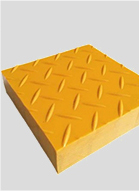loading...
- No. 9, Xingyuan South Street, Dongwaihuan Road, Zaoqiang County, Hengshui, Hebei, China
- admin@zjcomposites.com
- +86 15097380338
- Welcome to visit our website!
Affordable GFRP Bars Price | High-Quality Composite Reinforcement Solutions
Understanding the Pricing of GFRP Bars
Glass Fiber Reinforced Polymer (GFRP) bars have emerged as a revolutionary alternative to traditional steel reinforcement in construction and civil engineering. Their rising popularity can be attributed to their unique properties, including corrosion resistance, high tensile strength, and lightweight nature. As demand for sustainable and durable construction materials grow, it is essential to understand the factors influencing the pricing of GFRP bars and their applications in various sectors.
What Influences GFRP Bar Prices?
1. Raw Material Costs GFRP bars are primarily made from glass fibers and a polymer matrix, usually epoxy or vinyl ester resins. The prices of these raw materials can fluctuate significantly based on market conditions. For instance, an increase in demand for fiberglass materials due to advancements in the automotive or aerospace industries can indirectly drive up GFRP bar prices.
2. Manufacturing Processes The production of GFRP bars involves specialized manufacturing techniques such as pultrusion or resin transfer molding. The complexity and technology used in these processes can lead to higher operational costs. Companies that invest in advanced manufacturing capabilities may produce higher-quality bars but also need to pass on some of these costs to consumers.
3. Market Demand and Supply The construction market's health directly correlates with the demand for GFRP bars. As more builders recognize the benefits of GFRP, especially in infrastructure projects prone to corrosion, demand surges, potentially elevating prices. Conversely, if production exceeds demand, prices may stabilize or decline.
gfrp bars price

4. Economic Factors Inflation, exchange rates, and global economic conditions play a substantial role in pricing. For instance, a favorable exchange rate for manufacturers importing raw materials could make GFRP production more cost-effective, influencing end-user prices.
5. Geographical Variations The pricing of GFRP bars can also vary based on geographic location. Areas with a higher demand for advanced construction materials, such as urban cities or regions prone to natural disasters, may see elevated prices. Additionally, transportation costs can affect the overall price depending on how far a product needs to be shipped.
The Advantages of GFRP Bars
Despite potentially higher costs compared to traditional steel, GFRP bars offer long-term benefits, such as reduced maintenance expenses due to their resistance to corrosion. Their lightweight nature allows for easier handling and installation, which can lower labor costs. In applications like bridges, marine structures, and parking garages, where durability is paramount, the investment in GFRP bars often pays off over time.
Conclusion
In summary, the pricing of GFRP bars is influenced by a combination of raw material costs, manufacturing processes, market dynamics, economic factors, and geographical variations. As the construction industry increasingly turns towards innovative materials that promise longevity and sustainability, understanding these pricing elements becomes crucial for stakeholders. While the initial investment in GFRP bars might be higher compared to traditional options, their long-term performance and reduced maintenance make them an attractive choice in modern construction practices. As research and development in this field continue to evolve, the prices may also stabilize, making GFRP bars even more accessible to a broader market.
-
Why Choose a Galvanized Water Tank for Your Storage NeedsNewsMay.21,2025
-
The Strength and Durability of FRP GratingNewsMay.21,2025
-
The Importance of Water Treatment Systems for Clean and Safe WaterNewsMay.21,2025
-
The Advantages of FRP Rebar for Construction ProjectsNewsMay.21,2025
-
Say Goodbye to Hard Water with a Reliable Water SoftenerNewsMay.21,2025
-
Maximize Your Water Storage with a Sectional Water TankNewsMay.21,2025
-
The Power of Filter VesselsNewsMay.19,2025
